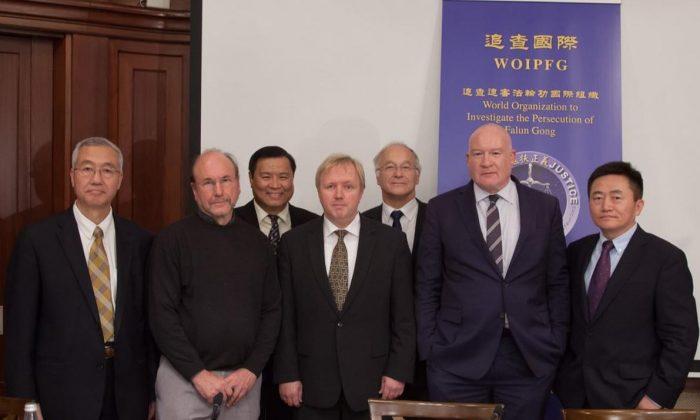Washington right now is supposed to be all about slashing budgets and tightening belts — but the Department of Defense has recently asked Congress for over a billion dollars. To buy rocks.
Specifically, to buy rare earth and other minerals that are crucial to the U.S. defense industry, and whose supply is currently at the mercy of China and its opaque political system. Japan, for example, was starved of rare earth elements during a maritime dispute with China in 2010. The United States wants to hedge that risk, given the damaging consequences an abrupt clampdown could entail.
The DoD has in previous years noted China’s near-monopoly on global rare earth metal production, but the present report, delivered to the House Armed Services Committee in late March, describes the risks in stark terms, and sketches out a range of scenarios.
One scenario has China embargoing exports of some key rare earth elements, and notes that currently the U.S. would be hamstrung.
Stockpiling some of the crucial elements is one of the proposed remedies for China’s control. It’s an idea that has hardly been heard since the later years of the Cold War, given the growth of globalized and largely unfettered trade that has characterized the last several decades.
Daniel McGroarty, principal of American Resources, a policy group, and president of U.S. Rare Earths, a mining company, referred to a reflection made by Adam Smith, the ideological father of free markets, over two hundred years ago: that when it comes to strategic items like sailcloth and gunpowder, “it might not always be prudent to depend upon our neighbors for the supply.”
Rare earth metals are to the the modern world what gunpowder and sailcloth were to 18th century Britain, McGroarty says, which explains the DoD’s concern.
“I think we lost sight of the geopolitical or strategic element that might cause countries to intervene in industry for reasons of advantage that are not just economic,” McGroarty said in a telephone interview. “I think we just didn’t see that. And now when we do see it, the situation has changed drastically.”
Two decades ago, McGroarty said, the rare earth market was split between the United States and China. “Now it’s become extraordinarily lopsided,” with China producing over 90 percent of supplies of rare earths.
The Department presents its report on Strategic and Critical Materials Report on Stockpile Requirements every other year. In the past it has noted China’s predominance in the rare earth metal space, but had not previously evinced the concerns seen now.
In a strategic risk assessment given in Appendix 12, the possibility of China cutting off rare earth exports was assigned a mean probability of only 4 percent, though with dire consequences. “Gross domestic product losses would be high, and the consequences would extend over a significant timeframe,” the report said.
It continued: “Economic consequences of war with China are high based on the mutual dependence between the two countries. Militarily the conflict would be violent, but quick; and we would get the better of it, at least in the next ten years. Politically, there would be some loss of credibility on both sides, due to the failure to prevent the war. Trade disruptions would also have major Chinese domestic political consequences.”
A scenario where China cuts off exports of some key minerals for a year “in an effort to coerce or punish the United states... as well as to drive up commodity prices,” was also considered. There would be a $1.2 billion shortfall for the 72 minerals considered.
Complicating the assessment is the sometimes haphazard and fragmented nature of how rare earths are obtained from China: in the south of the country, tens of thousands of metric tonnes of rare earths are thought to be wrung from the ground, and refined and exported, by a chaotic chain of fly-by-night mining operators — none of those figures go into the official books. Estimates for that illicit activity range from 10,000 to 40,000 metric tonnes per year.
At the height of its production, Molycorp, a U.S.-based miner of rare earth elements that was hit hard by China’s rock-bottom prices, says it planned to produce 20,000 metric tonnes of product in 2012. This means the underground Chinese supply component could be as much as double the entire U.S. supply, which goes some way to illustrating the opaque and potentially volatile nature of Chinese supply.
“Think about how nervous that would make a Pentagon planner,” McGroarty says.





